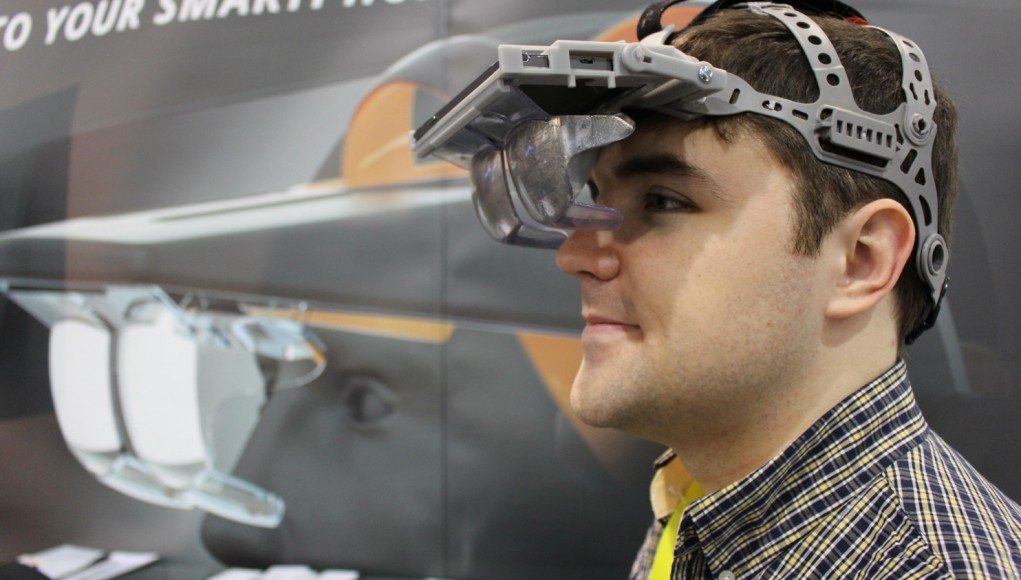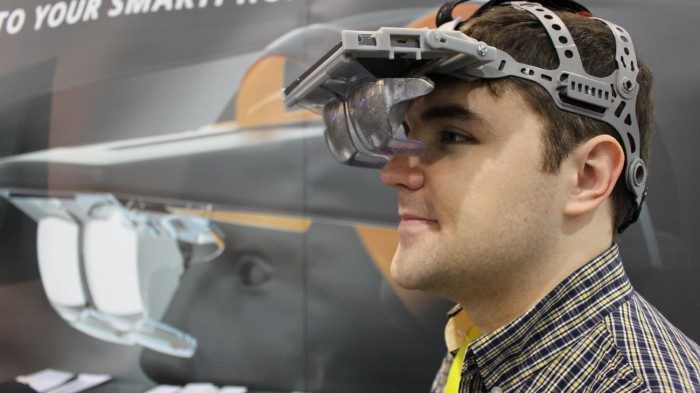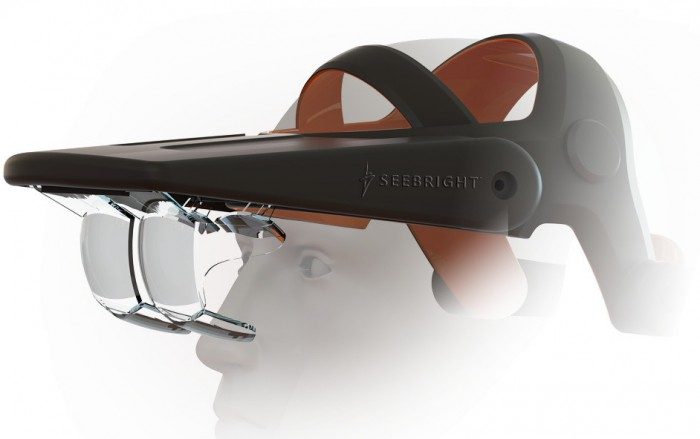The latest prototype design of a new augmented reality device was unveiled at last month’s CES: Seebright Wave is an AR headset that plans to use the graphical power of your smartphone to make augmented reality a low cost affair. Seebright claims that the Wave has the widest field of view of see-through AR devices in its class, a poignant advantage given the commentary of the narrow field of view on Microsoft’s recently revealed HoloLens.
Listen to this story (experimental):
Much like Google Cardboard leverages the power of the smartphone to make for a low-cost VR headset, the Seebright Wave aims to do the same for AR. Targeted initially toward phones in the 6-inch class, like the iPhone 6 Plus, Nexus 6, and Galaxy Note 4, Seebright says the Wave has “the widest field-of-view of any see-through display out there.”
Heading to Kickstarter in March, starting at $150, the Seebright Wave is set to arrive with a companion controller that’s visually tracked. Seebright’s first-party application suite, SDK, and software sharing platform are also set to be released upon completion of the crowd-funding campaign. The company has made significant changes to their previous design which we saw last year during the 2014 SVVR Expo in May. Road to VR’s Ben Lang spoke with Seebright’s CMO, Simon Solotko, to learn more about the device (note: in the interview it’s stated that the Kickstarter will launch in February, but the company has since updated us on their timing).
Lang was able to try on the latest form factor prototype (photo above). It wasn’t functional, so we can’t comment on the field of view, but it was definitely more slim than earlier prototypes which had the phone mounted vertically. For the final design of the Kickstarter device, the company is aiming for something even more sleek, but there’s still a ways to go before we’d consider wearing it out and about.
Although the Wave will overlay a see-through image before the user, should the AR content aim to interact with the world, the smartphone will have to rely on its own sensors to interpret the physical space around the user, a notoriously difficult challenge, even for specialized devices.
We’ll fill you in with more details on the Seebright Wave as the Kickstarter approaches in March.









